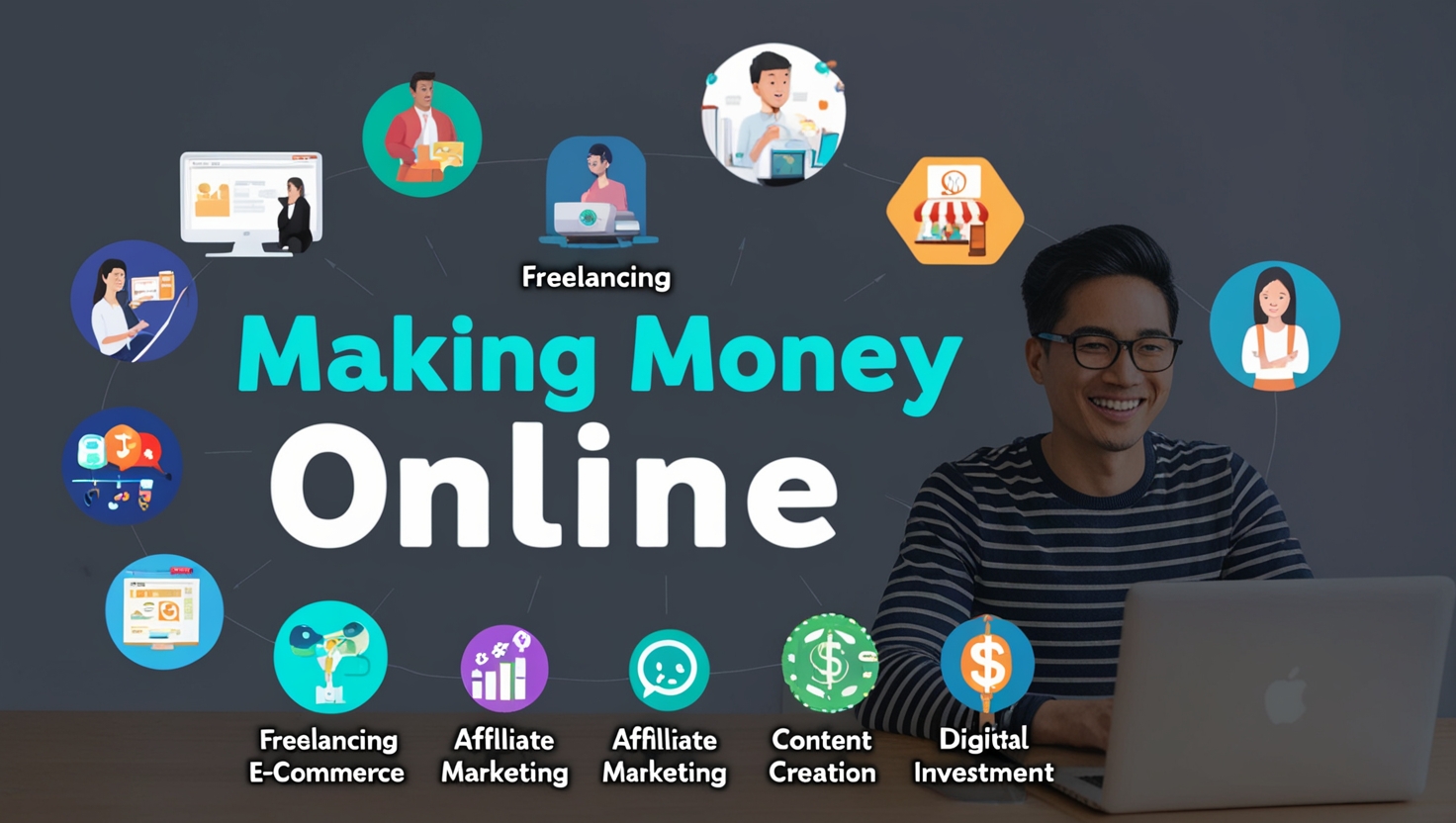Introduction: The Age of Podcasts and the Audio Content Economy
The media landscape is undergoing a radical shift towards audio content, especially podcasts. Podcasts are no longer just a form of entertainment; they have become a powerful platform for marketing, education, and building personal and commercial brands. With the number of listeners steadily increasing, so are the opportunities to profit from this field. In this comprehensive guide, we will explore how to transform your idea into a successful and profitable podcast, from planning to monetization.
Chapter 1: Identifying Your Idea and Target Audience
1.1 Discovering Your Passion and Area of Expertise
The first step towards creating a successful podcast is identifying a topic that you are passionate about and have expertise in. Your passion will help you continue producing high-quality content even in challenging times, and your expertise will make you a trusted authority in your field.
Example: If you are an expert in digital marketing, you can create a podcast that covers the latest marketing strategies, campaign analytics, and tips for improving performance.
1.2 Analyzing Your Target Audience and Identifying Their Needs
After identifying the podcast topic, you must define your target audience. Who are the people who will listen to your show? What are their interests? What problems do they face? Answering these questions will help you create content that meets their needs and attracts them to listen to your show regularly.
Example: If your target audience is young entrepreneurs, you can focus on topics such as entrepreneurship, finance, marketing, and personal development.
1.3 Studying Competitors and Analyzing Strengths and Weaknesses
Before you start producing your podcast, it is important to conduct a comprehensive study of your competitors in your field. What programs exist? What are their strengths and weaknesses? What topics do they cover? This study will help you identify gaps in the market and create a unique and distinctive program.
Tip: Look for angles that have not been covered sufficiently, or offer a new and different perspective on existing topics.
Chapter 2: Planning Your Podcast Production
2.1 Choosing the Right Name and Logo
The podcast name is the first thing potential listeners see, so it should be catchy, memorable, and reflect the content of the program. The logo is also important because it represents the podcast brand and helps distinguish it from competitors.
Tip: Use idea generation tools to find a suitable name and logo.
2.2 Determining the Program Format (Interviews, Discussions, Storytelling)
There are many different podcast formats, such as interviews, discussions, storytelling, and educational programs. Choose the format that suits your personality and the content of the program.
Example: If you enjoy talking to others, you can choose the interview format. If you are good at storytelling, you can choose the storytelling format.
2.3 Writing a Script or Key Points for the Episode
Even if you are an improvisational speaker, it is important to write a script or key points for the episode. This will help you stay on track and cover all the important topics.
Tip: Do not read the script verbatim, but use it as a guide to direct the conversation.
Chapter 3: Preparing the Necessary Equipment
3.1 Choosing the Right Microphone
Sound quality is the most important factor in the success of a podcast. Invest in a good microphone to record clear and crisp sound. There are many options available at different prices, so look for the option that fits your budget.
Tip: Start with a good USB microphone, then upgrade to a professional microphone with an audio interface later.
3.2 Choosing Recording and Editing Software
There are many recording and editing software programs available, some free and some paid. Choose the program that suits your skills and budget. Some popular options include Audacity (free), GarageBand (free), and Adobe Audition (paid).
3.3 Preparing the Recording Room (Sound Isolation)
For the best sound quality, you should record in a soundproofed room. If you do not have a soundproofed room, you can use blankets or pillows to absorb sound.
Chapter 4: Recording the First Episode
4.1 Preparing for Recording (Comfort, Lighting, Sound)
Before you start recording, make sure you are comfortable and relaxed. Adjust the lighting and sound in the room for the best results.
4.2 Recording Clearly and Confidently
Speak clearly and confidently, and try to be as natural as possible. Don't be afraid to make mistakes, you can correct them in editing.
4.3 Tips for Avoiding Common Mistakes During Recording
- Avoid background noise.
- Avoid speaking too fast or too slow.
- Avoid using filler words (like "um" and "uh").
Chapter 5: Editing and Audio Post-Production
5.1 Removing Noise and Errors
Use the editing software to remove noise and errors from the recording. This will help improve the sound quality and make the program more professional.
5.2 Adding Music and Sound Effects
Adding music and sound effects can make the program more engaging and exciting. Use music and sound effects carefully to avoid distracting listeners.
5.3 Adjusting and Standardizing Volume Levels
Make sure the volume level is consistent throughout the program. This will prevent listeners from having to raise or lower the volume constantly.
Chapter 6: Podcast Hosting
6.1 Choosing the Right Hosting Platform (Libsyn, Buzzsprout, Anchor)
The hosting platform is where your podcast files are stored and distributed to various listening platforms. There are many hosting platforms available, such as Libsyn, Buzzsprout, and Anchor. Choose the platform that suits your needs and budget.
6.2 Creating an Account and Setting Up the Podcast
After choosing the hosting platform, create an account and set up the podcast. Upload the audio files and write a description of the program and episodes.
6.3 Submitting the Podcast to Listening Platforms (Spotify, Apple Podcasts, Google Podcasts)
After setting up the podcast, submit it to various listening platforms, such as Spotify, Apple Podcasts, and Google Podcasts. This will allow listeners to find and listen to your program.
Chapter 7: Marketing Your Podcast
7.1 Using Social Media
Use social media to promote your podcast. Share clips from episodes, share listening links, and interact with listeners.
7.2 Collaborating with Other Podcasters
Collaborate with other podcasters in your field. Conduct interviews with them, or participate in their programs as a guest.
7.3 Search Engine Optimization (SEO)
Use appropriate keywords in the description of the podcast and episodes. This will help listeners find your program in search engines.
Chapter 8: Building a Community Around Your Podcast
8.1 Interacting with Listeners
Interact with listeners on social media and in the comments section. Answer their questions, listen to their feedback, and build a relationship with them.
8.2 Creating a Group or Forum
Create a group or forum for listeners. This will provide them with a place to connect with each other and exchange ideas.
8.3 Organizing Events or Meetups
Organize events or meetups for listeners. This will provide them with an opportunity to meet each other and get to know you personally.
Chapter 9: Ways to Monetize Your Podcast
9.1 Advertising and Sponsorship
Advertising and sponsorship are one of the most common ways to monetize a podcast. Sell advertising space in your program to companies that target your audience.
Example: A software company can sponsor an episode that covers a topic related to technology.
9.2 Affiliate Marketing
Promote products and services related to your podcast content and earn a commission for every sale made through your referral link.
9.3 Selling Your Own Products and Services
If you have your own products or services, you can promote them in your program. This can be an effective way to increase sales.
Example: If you are a business coach, you can sell training courses or consulting services.
9.4 Paid Subscriptions (Patreon)
Offer exclusive content to listeners who pay a monthly subscription. This can be a great way to generate a steady income.
9.5 Donations
Ask listeners to donate to your program. This can be a good option if you have a loyal and enthusiastic audience.
Chapter 10: Tips for Achieving Continued Success in the World of Podcasting
10.1 Continue to Produce High-Quality Content
The most important thing to achieve success in the world of podcasting is to continue to produce high-quality content. This will help you attract and retain listeners.
10.2 Adapt to Changes in the Market
The world of podcasting is constantly changing. Stay up to date with the latest trends and technologies, and be prepared to adapt to changes in the market.
10.3 Don't Give Up
Building a successful podcast takes time and effort. Don't give up if you don't see immediate results. Keep working hard, and you will eventually achieve success.
Important Statistics: According to Statista, the number of podcast listeners worldwide is projected to reach 504.9 million by 2024. This represents a huge opportunity for creators to profit from audio content.
Final Tip: Be patient and persistent, and don't be afraid to try new things. With hard work and dedication, you can turn your passion for podcasting into a profitable and rewarding venture.




